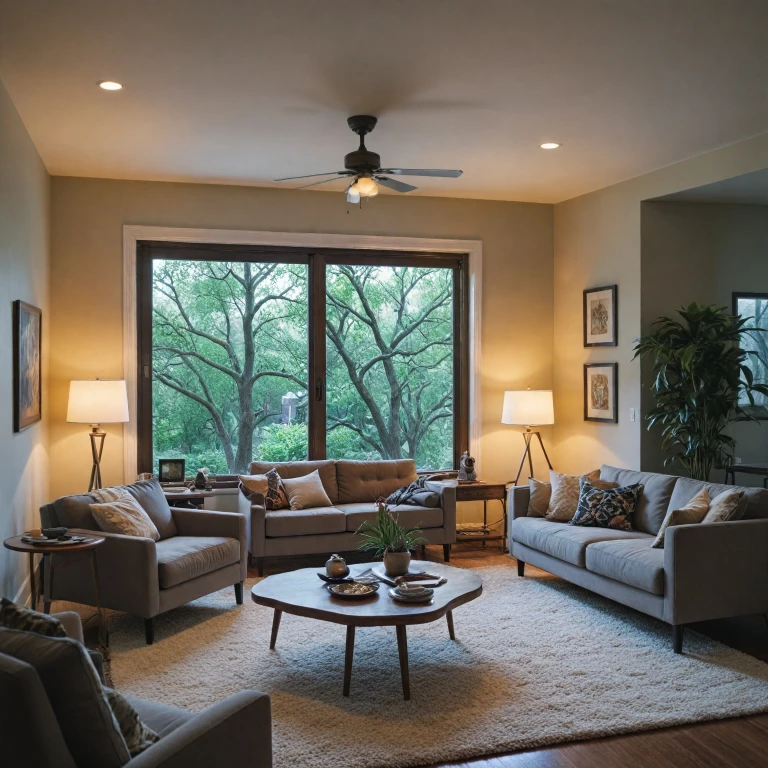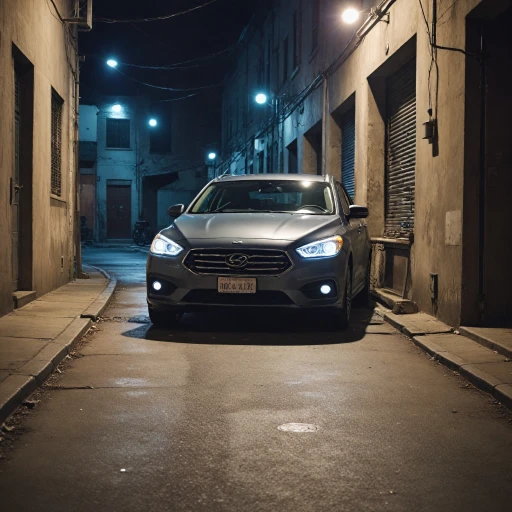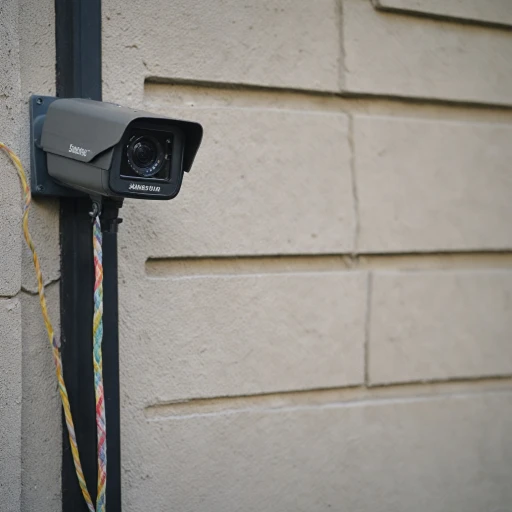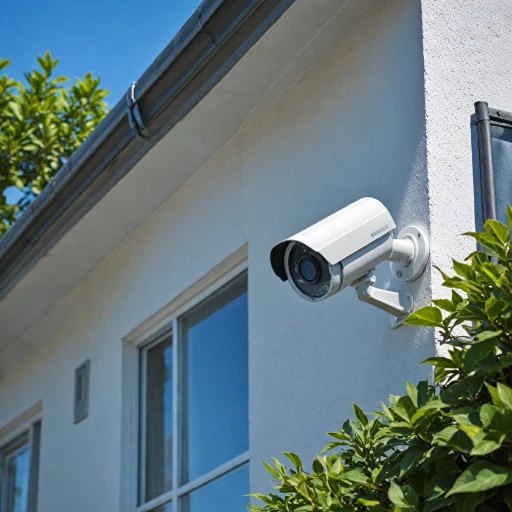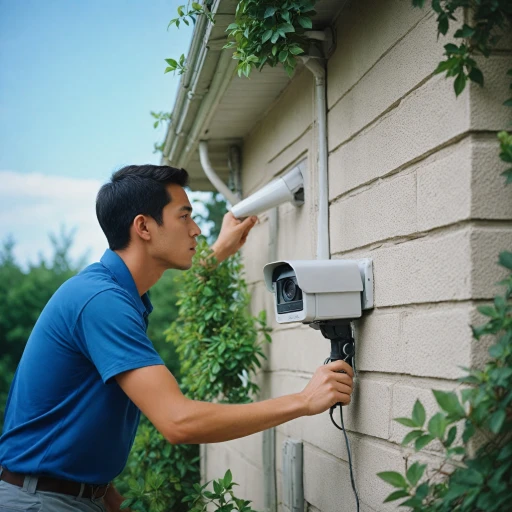
Understanding PoE Switches
Decoding Power over Ethernet (PoE) Switches
Power over Ethernet (PoE) switches are revolutionizing the way we manage home security camera systems. By delivering both power and data through a single Ethernet cable, PoE switches simplify the installation process and reduce the clutter of cables. This technology is not only beneficial for its convenience, but also ensures reliable and efficient connectivity to your security cameras. When choosing a PoE switch, various factors come into play, including the total number of PoE ports you need and your budget constraints. PoE switches come in different configurations—from the number of ports to the type of management they require. For example, some homeowners may prefer an unmanaged PoE switch for simplicity and cost-effectiveness, while others might opt for a more sophisticated network switch with management capabilities. Considerations like the gigabit capacity of a switch are crucial if you handle high-definition security cameras. Gigabit PoE switches offer faster data transfer rates, ensuring your cameras transmit clear and detailed footage seamlessly. Keep in mind, though, that prices may vary based on features, with the original price often reflecting the number of gigabit poe ports and power capacity. The power output per port, often measured in watts, is another critical factor. Ensuring your switch can supply enough power for all connected cameras is fundamental. Moreover, innovative features like "extend mode"—which can increase the distance that power and data are effectively transferred—might be a significant advantage. In conclusion, thoroughly evaluating your needs, such as the total number of cameras and the complexity of your network, will guide you in choosing the perfect PoE switch. As you explore options, remember there are a variety of model offerings at different price points, ensuring that there is a suitable switch for every requirement. For more insights on enhancing your home security, consider visiting enhancing home security with wired ring cameras.Benefits of Using PoE Switches for IP Cameras
Advantages of Utilizing PoE Switches in Your Camera Setup
PoE (Power over Ethernet) switches are revolutionizing home security systems by simplifying the installation and maintenance of IP cameras. Here are some compelling benefits of incorporating PoE switches into your security setup:- Single Cable Solution: With PoE switches, you can transmit both data and power to your security cameras through a single Ethernet cable. This eliminates the need for separate power supplies, reducing cable clutter and simplifying the installation process.
- Cost-Effective Installation: By removing the necessity to run electrical wires, PoE switches can lower installation costs significantly. This streamlined approach not only saves money but also reduces the time needed to set up your security cameras.
- Flexibility and Scalability: PoE switches accommodate a range of devices, enabling you to easily add or remove security cameras based on your needs. This scalability is a significant advantage for both small home setups and larger, more complex security systems.
- Power Management: PoE switches offer automated power management features, such as power scheduling and priority settings for different ports. They ensure your cameras receive the necessary power without overloading the system, even when new devices are added.
- Port Versatility: Choose between different port types, such as gigabit or unmanaged ports, depending on your needs and budget. Unmanaged PoE switches, for example, are plug-and-play, requiring no configuration, an ideal choice for cost-effective setups.
- Extended Reach: Some PoE switches have an extend mode that increases the maximum Ethernet cable length, allowing you to place cameras further from the switch without compromising signal quality.
Choosing the Right PoE Switch for Your Home
Selecting the Perfect PoE Switch for Your Security Needs
Choosing the appropriate PoE switch for your home security system is crucial, as it can greatly influence the performance and reliability of your IP cameras. Here’s how you can make an informed decision:- Assess Your Budget and Requirements: Start by determining how much you are willing to spend. PoE switches come in various price ranges, from budget-friendly unmanaged options to high-end managed switches. Consider how many cameras you plan to support; more cameras may require a switch with more PoE ports.
- Evaluate the Number of Ports: Ensure the switch has enough PoE ports to accommodate all your security cameras. For future-proofing, you might opt for a switch with extra ports to allow for potential expansion of your camera system.
- Consider Power Requirements: Calculate the total power needs of your cameras. Different switches offer varying power outputs per port, generally measured in watts. Make sure the PoE switch can deliver sufficient power to all connected cameras.
- Check Network Capabilities: If you have a high number of cameras, a gigabit PoE switch might be essential to ensure seamless data transmission. Look for switches with gigabit Ethernet capabilities to manage higher data loads efficiently.
- Features and Modes: Some switches come with special features such as fanless mode for silent operation, or extend mode which enhances connectivity over long distances. Depending on your setup, these features can be beneficial.
Installation Tips for PoE Switches and IP Cameras
Setting Up Your PoE Switch and Cameras
Installing a PoE (Power over Ethernet) switch in your home can seem daunting at first, but with the right guidance, it can be a smooth process. Here are some essential tips to ensure a successful setup of your PoE switches and IP security cameras.- Plan Your Network Layout
- Before purchasing any equipment, determine where you will position your cameras and PoE switch. Consider the cable lengths you'll need to connect each camera to the switch. This planning will help you avoid unnecessary expenses.
- Choose the Right Cables
- Use Cat5e or Cat6 ethernet cables to connect your cameras to the PoE switch. These cables are ideal for both power and data transmission. Ensure they can handle the total wattage required by all cameras.
- Position Your PoE Switch Securely
- Place your PoE switch in a central location that's easily accessible yet secure. This positioning will ensure that each camera benefits from optimal power and network connectivity while keeping the switch out of sight from unauthorized access.
- Power Up the System
- Connect the PoE switch to your network via a router or main hub. Once the connections are made, power up the switch. Ensure your cameras are receiving both power and network signals through the ethernet ports.
- Use PoE Ports Wisely
- Depending on your security camera systems, connect each camera to its designated PoE port. Unmanaged PoE switches are straightforward, requiring minimal configuration.
- Test Each Camera’s Connectivity
- After setup, test each camera’s connection by checking video feeds on your monitoring software. Gigabit PoE switches often provide ample bandwidth for smooth video streaming.
- Consider Extend Mode for Long Distances
- If you need to connect cameras over longer distances, use the extend mode feature. This feature optimizes power and data transmission over greater lengths, ensuring consistent performance.
- Monitor Network Load
- Keep an eye on network performance as you add more devices. Adjust your setup if you notice lagging feeds or power inconsistencies, which can occur if your switch is nearing its original capacity.
Troubleshooting Common Issues
Addressing Common Challenges with PoE Switches
When integrating PoE switches into your home security system, you might encounter a few common issues. Understanding these can help you maintain a seamless operation of your IP cameras.
Power Supply Concerns
One frequent issue is insufficient power supply to the cameras. Ensure that your PoE switch provides adequate watts per port to support all connected devices. If your cameras are not receiving enough power, consider upgrading to a switch with a higher total power budget or adding a secondary PoE switch to distribute the load.
Network Connectivity Problems
Network connectivity issues can arise from improper cable connections or faulty ports. Check that all ethernet cables are securely connected and that the ports on your switch are functioning correctly. If you experience connectivity drops, try using a gigabit PoE switch to ensure faster data transfer rates, which can improve the reliability of your security cameras.
Configuration and Compatibility Issues
Sometimes, the problem lies in the configuration settings of your PoE switch or the compatibility with your camera systems. Ensure that your switch is set to the correct mode, such as extend mode, if needed. Additionally, verify that your cameras are compatible with the switch, especially if you're using an unmanaged PoE switch, which might not support advanced configuration options.
Overheating and Fan Noise
Overheating can be a concern, especially in switches with multiple active ports. Consider using a mode fanless PoE switch to reduce noise and heat output. Proper ventilation around the switch can also help mitigate overheating issues.
Price and Budget Constraints
Finally, budget constraints can impact your choice of PoE switches. While it's tempting to opt for the lowest original price, investing in a quality switch with sufficient PoE ports and power capacity can save you from future headaches. Balance your budget with the need for reliable security systems to ensure peace of mind.

